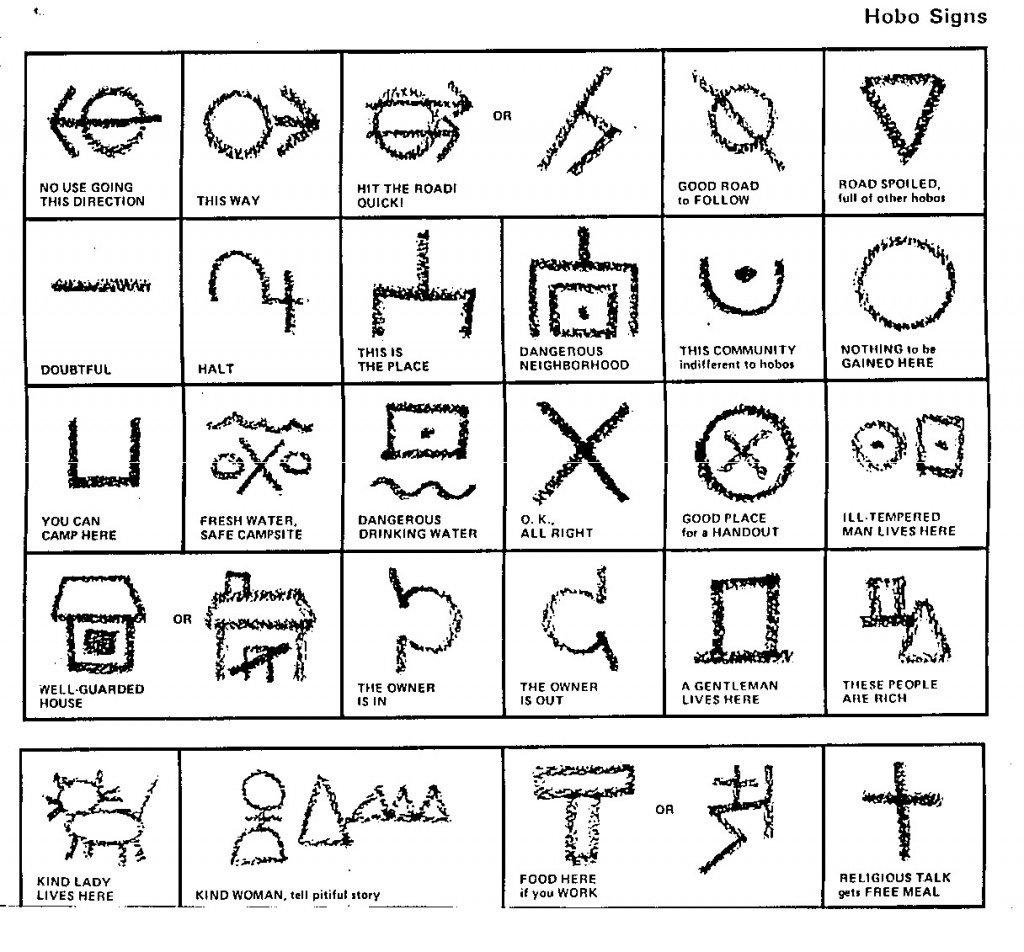Going in circles
The end of the year seemed to beg for a cyclical theme. We tried out three different games.
-
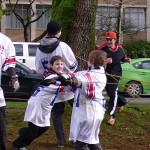
-
Cyclada
-
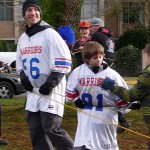
-
Narrow field in Cyclada
-
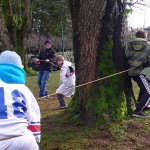
-
Cyclada
-

-
Cyclada
-

-
Cyclada
-
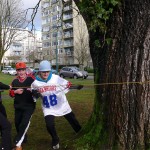
-
Cyclada
-
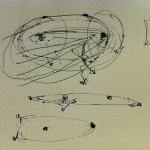
-
Brainstorming Cyclada
-
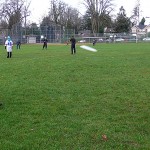
-
Heather and Zoe play New Frisbee
-
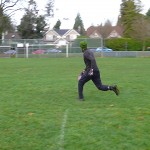
-
Ryan applies “maximum effort” at New Frisbee
-
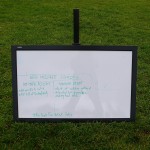
-
New Frisbee scoring
-
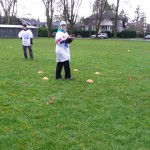
-
Figuring out Circle Football
-
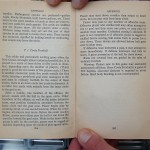
-
Circle Football rules
Cyclada
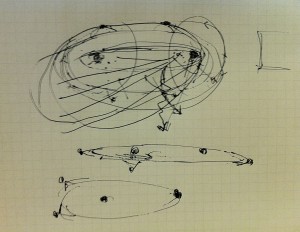
Sketch of ideas for the game that would become Cyclada
Germaine had been thinking about a game (1) in which the playing field would change shape, and (2) that would make use of the two huge maple trees that stand outside the field house. She had vague ideas about a field in which the two trees would be the foci of an oval, and conceived of a game that used the trees as bases and a rope around the trees, which could be pulled by players in order to deform the field. “Sort of a cross between cricket and tug-of-war” was the shorthand description.
Development
Starting with a 100-foot rope that gave a good amount of slack around the trees, this game developed a lot through play. The initial concept was to use a ball, either kicked or thrown by the runner, to start the play. The scoring would continue until the runner either was put out by the ball, or couldn’t run around the bases (trees) because the defense had used the rope to cut off the running path. First we switched to a ring frisbee, to echo the shape of the field, and attempted to put the runner out by hitting one of the trees with the ring. That proved incompatible with the equipment, so we considered outlining a smaller area that would be used as a target for the ring, and tried an additional post onto which the ring could be dropped to put the runner out. However, those solutions were too fussy. It made more sense to use less equipment, so we finally settled on having a frisbee thrown by the runner, with the runner being thrown out by the defense hitting one of the trees with the frisbee thrown from the other tree.
In terms of actions allowed and disallowed, it quickly became clear that we’d have to set some limits on how players could use the rope, so the first rule — don’t hurt the runner — was soon joined by restrictions on blocking: not grabbing other players, not crossing the rope, not grabbing the rope in two locations.
The name of the game evolved from word play: cricket became cicada became Cyclada, in honour of its cyclical character.
Basic rules
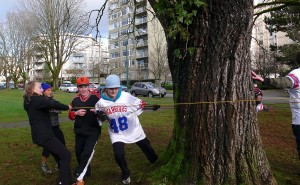 We finished the session with the following provisional rules:
We finished the session with the following provisional rules:
- The field is delimited by a loose rope around two trees. Both teams are on the field at the same time, and take turns at running.
- The runner starts the action by throwing the frisbee towards the open field. Everyone must be touching the rope at the time the runner plays the frisbee. The runner scores points by running around the two trees, alternately. Each tree is worth one point.
- Offense and defense move and pull on the rope to change the shape of the field in order to allow or prevent the runner from rounding the trees.
- The runner can be put out in one of three ways: (1) the defense changes the rope field in such a way that the runner can’t advance; (2) the defense retrieves the frisbee and throws it from one tree to hit the other; or (3) the defense catches the frisbee before it lands on the ground.
- Fielders cannot grab each other or the runner. They can’t grab the rope in two different locations. They also can’t cross or twist the rope (but can lean on it so that different areas of the rope touch).
Emergent strategy and possible developments
Cousins Derik and Ryan quickly invented the multi-player block, which was so effective it had to be disallowed. We also soon realized that twisting the rope would make it impossible, so that was also nixed. We did, however, allow the rope to be pulled to one extremity and then wrapped around one of the trees to make passage impossible; that was judged to be a failure of offense, not of the game’s mechanics.
It could be interesting to play this again without the frisbee element, only using the rope as the means of controlling the number of points scored on each turn.
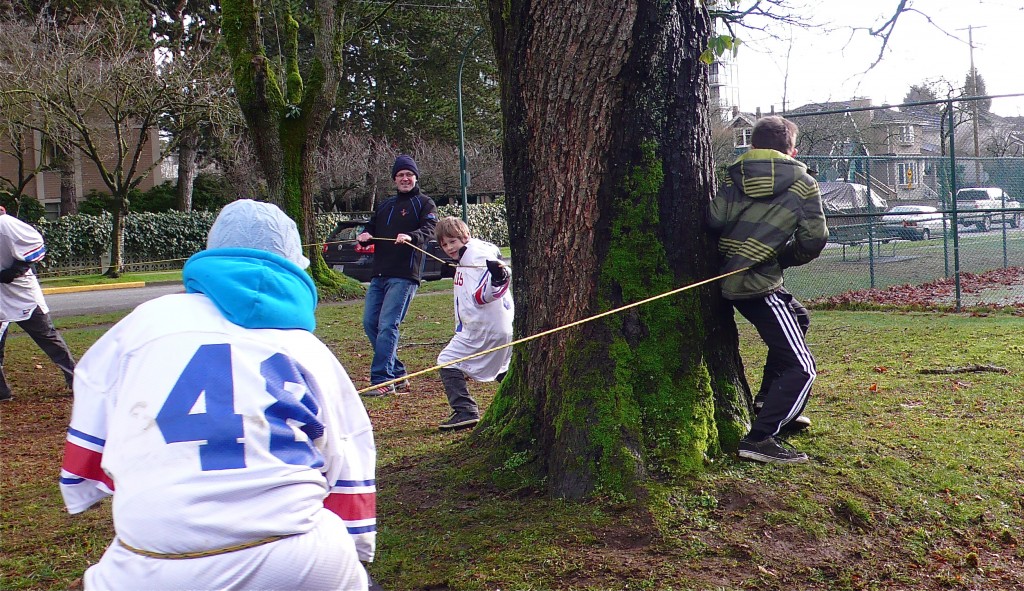
New Frisbee
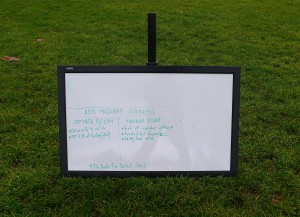
New Frisbee scoring
Pro mountain biker Ryan Leech brought a couple games from The Ultimate Athlete by George Leonard, a book dating from the participatory New Games movement of the 1970s. The interesting character of this game became clear even as Ryan was reading out the rules. Yes, it was based on scoring, and yes, it assumed everyone was capable of playing, but what was interesting is that the players have to judge their own ability to play, a maximum effort up to that ability limit is required, and “perfection is expected and thus not extrinsically rewarded.” It set up an interesting situation in which one’s honour was on the line not only in terms of effort, but also in honesty when assessing and admitting one’s abilities.
The rules
The game is played between two players to 11 points, with throwing and catching roles changing when the active thrower reaches 6 points. The thrower and catcher each have to declare which hand they’ll use to throw and to catch the frisbee. As long as the thrower throws the frisbee in a way that is catchable by the catcher, and the catcher succeeds in catching with the hand he declared, there are no points scored. Points are scored by the catcher when the thrower fails to throw the frisbee in a way that is catchable by the maximum effort of that catcher, or throws it at a greater than 45 degree angle. Points are given to the thrower if the catcher “fails to make an all-out effort”, uses the wrong hand, or drops or bobbles the frisbee.
Observations
This game effectively gave purpose to may sometimes seem like an aimless pastime. The sportsmanship aspects were really interesting, as individuals had to adjust to different abilities and acknowledge their own abilities. Strategically, the game well played would seem to favour the thrower.
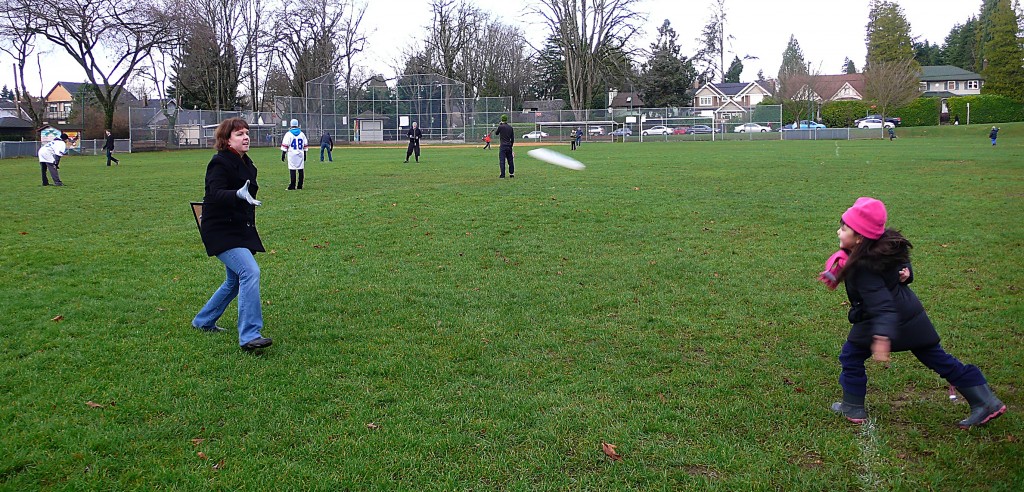
Circle Football
The second game from Leonard’s Ultimate Athlete was Circle Football. Instead of a sport moving back and forth between goal lines, this variation on American football has a small inner circle inside a much larger circle. The goal zone is outside the large circle, and an additional corridor leads outward from the inner circle to the goal zone. The passer stands in the inner circle and has 15 seconds to pass to a teammate or begin to run the corridor to the goal zone. Unlimited passing is allowed once the ball has been passed. The offensive team has three tries to score before turning the ball over.
We didn’t spend enough time to develop a good sense of this game, but George Leonard’s description of it as “tricky and particularly exciting” and requiring “360 degrees, all-around alertness” seems apt.

Circle Football rules from George Leonard, The Ultimate Athlete


